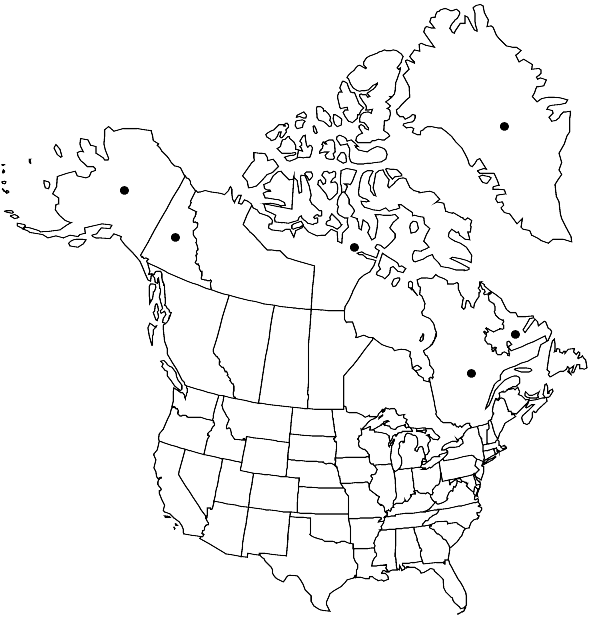Niphotrichum panschii
in R. Ochyra et al., Cens. Cat. Polish Mosses, 138. 2003,.
Plants medium-sized and gracile to fairly large, olivaceous to green in the distal part, brown to blackish brown proximally. Stems (2–) 4–6 (–11) cm, ascending to erect, mostly unbranched, rarely irregularly sparingly or pinnately branched. Leaves imbricate and closely appressed on drying, erect-spreading on wetting, straight, ovatelanceolate to elliptical, 1.9–2.8 × 0.9–1.3 mm; margins broadly recurved from base to apex; gradually tapering towards the apex, mostly terminated with a hyaline awn, awn mostly short and broad, less often long and narrow, slightly flexuose, irregularly denticulate and spinulose, papillose proximally, with narrow but fairly tall and irregularly arranged papillae on the abaxial side, epapillose or nearly so in the distal part; basal laminal cells elongate, 40–70 × 5–7 µm, epapillose or nearly so in 2–4 cell rows at the insertion, with thick and nodulose longitudinal walls; alar cells hyaline, forming small to medium-sized, rounded and somewhat inflated group of 2–4 cell rows; supra-alar cells not sinuose, thick-walled, forming a pellucid marginal border, consisting of to 10 (–20) cells; medial and distal laminal cells rectangular, 15–25 × 7–12 µm, distinctly papillose. Sterile.
Habitat: Dry and exposed or moist to wet sites, acidic or seldom calciferous soil and rocky ground, between boulders, on scree, talus and rocky seepage slopes, cliffs and ledges, late snow beds and various communities of polar tundra
Elevation: low to moderate elevations (0-1600 m)
Distribution

Greenland, Nfld. and Labr. (Labr.), Nunavut, Que., Yukon, Alaska, Europe (Spitsbergen), Arctic and temperate Asia
Discussion
Niphotrichum panschii is fairly frequent in the high Arctic of Alaska, the Yukon Territory, and Nunavut, as well as in Greenland (except for the southernmost part), only occasionally southwards to latitude ca. 55º N in Labrador. It is closely related to N. canescens, but the possibility of confusion with the typical subspecies of the latter is rather minimal since that is a temperate taxon and its range does not overlap that of N. panschii. The taxa have a similar leaf shape, although N. panschii always has straight leaves that are not hyaline in the distal part and it is less robust than subsp. canescens. Niphotrichum panschii is externally more similar to N. canescens subsp. latifolium, and they are more likely to be confused, especially because they often grow together. However, they can be recognized by their awns, which in N. panschii are less papillose but more strongly spinulose and serrate at the apex, relatively short, less flexuose, and directed upwards. In contrast, the awns of subsp. latifolium are strongly papillose throughout and only faintly serrulate, long, distinctly flexuose, and consequently spreading from the shoot. The stems of N. panschii are sparingly branched to almost unbranched, and the branches are usually erect and fragile, whereas those of subsp. latifolium are more profusely branched, and the branches are non-fragile.
Selected References
None.